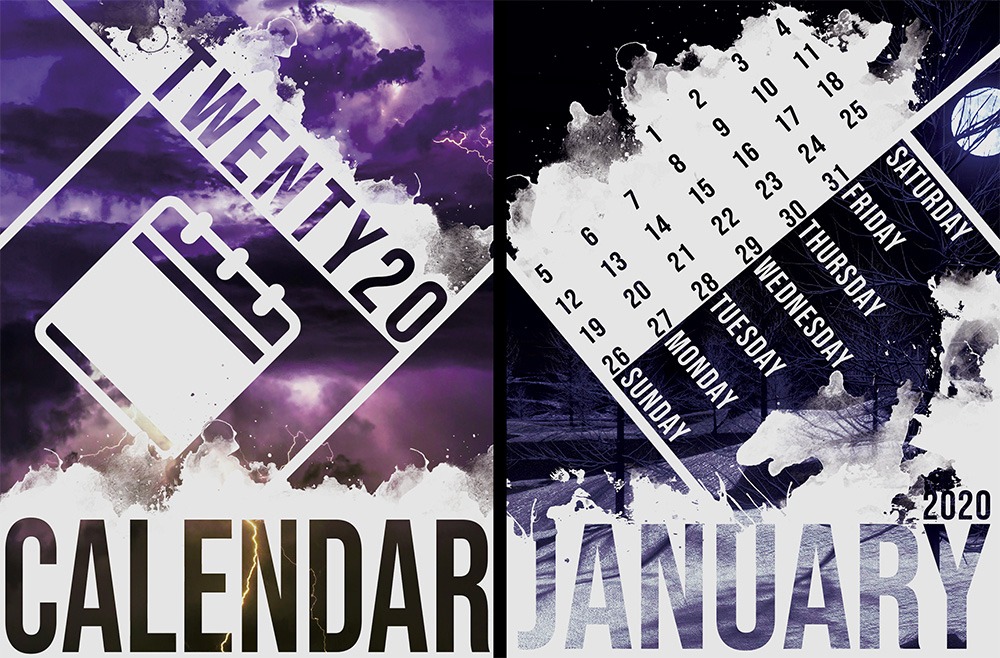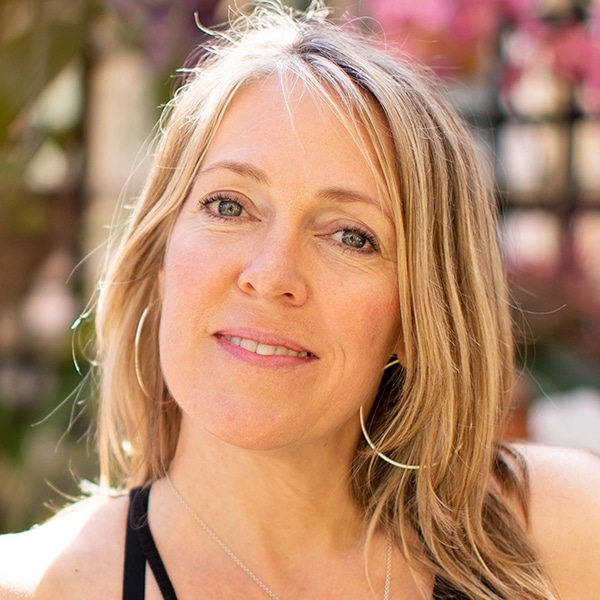DES 207: Layout Design
Creative approaches to print page layout design
Whether it's a magazine spread, a subway poster, or even a Web page, nothing connects or communicates like a great layout. In this advanced layout design course, you'll tackle advanced-level projects that push your design skills to the limit. Working with a design pro, you will explore creative applications for lines and shapes, learning how to use or break the rules of layout. Course projects include a 4-page magazine spread, a book jacket design, and a calendar.
 Student work by Kayla Langley.
Student work by Kayla Langley. Visit the Student Gallery.
About This Course
Project-Based Learning
Creative studies in print page layout design include a magazine spread, book jacket cover, and calendar design.
What Skills Will I Develop?
Students in this course can expect to learn to:
- Develop an understanding of the structural foundations of layout design, creating a grid and placing fundamental elements in a page layout.
- Create an editorial layout for a 4-color design magazine, using a grid system as a foundation: manuscript, column, modular, or hierarchical.
- Identify and apply geometric approaches to layout design, using ratios, proportions, lines, and shapes.
- Create page layout templates using geometric proportions: golden rectangle, golden spiral, or root 2 rectangle.
- Develop an understanding of the principles of balance, negative space, and focal points in a composition.
- Develop an understanding of techniques for unifying a page design, including framing, page bleeds, layering, and proximity.
- Explore and apply alternative layout techniques and approaches to composition.
- Design a calendar using alternative layout techniques and/or approaches to composition.
What Software and Supplies Do I Need?
- Computer with Internet connection.
- Adobe Photoshop and InDesign.
- Basic experience in the above software.
Course Instructor(s)
The course is taught by the following instructor(s):
 Kristen Becker
Kristen Becker
Kristen Becker is an educator and a graphic and business designer specializing in e-commerce. With over 12 years of experience as an award-winning educator, Kristen has developed curriculum and taught courses in graphic design, multimedia, and e-commerce/marketing.
Course Outline
Structural Foundations
Don't let anyone tell you otherwise, the basis of creative layout design is organization. The first lecture will explore the structural foundations of layout design—how designers use grid systems to unite text, images, and other page elements within an overall visual communication. Case studies on A.M. Cassandre and Josef Müller-Brockmann explore how the masters constructed fluid designs on firm foundations. You'll learn how elements such as margins, markers, modules, and flowlines help to unify a page or spread. Then you'll examine applications for the common grid systems used by designers: manuscript grid, column grid, modular grid, and hierarchical grid.
Geometric Design
Order is a necessary element in all design and a complement to creativity. This week, we will examine creative applications for a geometrical approach to page composition. Classic proportional systems are explored, including the golden section, golden spiral, Fibonacci sequence, root 2 rectangle, and the rule of thirds. You'll also investigate how to use lines and shapes as graphic elements to create a sense of order. Lines, curves, circles, angles, bars and squares, and patterns are all explored as possible tools for structuring a layout. The lesson concludes with a discussion on the importance of balance, negative space, and strong focal points.
Structure and Deconstruction
The final lecture explores ways of moving beyond traditional layout structures and using a more intuitive, experimental approach. Unconventional structural approaches discussed will include contextual framing, page bleeds, layering, proximity, and hypnotic wandering. Type layout concepts discussed will include 3D type, chunking, text columns, and the vexed question of legibility. Finally, you'll explore some Post-Modern layout techniques: freeform, surreal collage, 3D environments, fragmentation, graffiti, cutouts, overprinting, and conceptual design.
Frequently Asked Questions (FAQ)
How Do The Courses Work?
Our courses are project-based and instructor-led. In each course you’ll complete a series of lectures, projects, discussions, and critiques designed to stretch your creative skills. Weekly assignment deadlines keep you on track, and with no set-logins or Zoom meetings, you can build your studies around your schedule.
Who Are The Instructors?
Our courses are developed and taught by our industry-leading faculty of creative professionals. This means that you’ll learn in-demand skills, get feedback on your work, and build a portfolio of creative work. View our Student Gallery for featured student projects.
When Can I Start?
Classes start January, April, and August, and this course can be completed as part of a 15-week term in 8 weeks. College credit from this course can be applied to a range of degree and certificate programs at Sessions College.
How Do I Register?
To register for a program, complete our program application. To register for this course on an individual basis, please contact our admissions team at admissions@sessions.edu. An Admissions Advisor will contact you to setup your enrollment.
| Fall 2024 Course Tuition and Fees | |
|---|---|
| Tuition | $300/credit |
| Registration Fee* | $200 |
| Total Course Price | $650 |
Registration fees are nonrefundable after 5 days from enrollment.
Is Sessions College Accredited?
Yes. Since 2001, Sessions College has been accredited by the Distance Education Accrediting Commission (DEAC). The Distance Education Accrediting Commission is listed by the U.S. Department of Education as a recognized accrediting agency and is recognized by the Council for Higher Education Accreditation (CHEA).